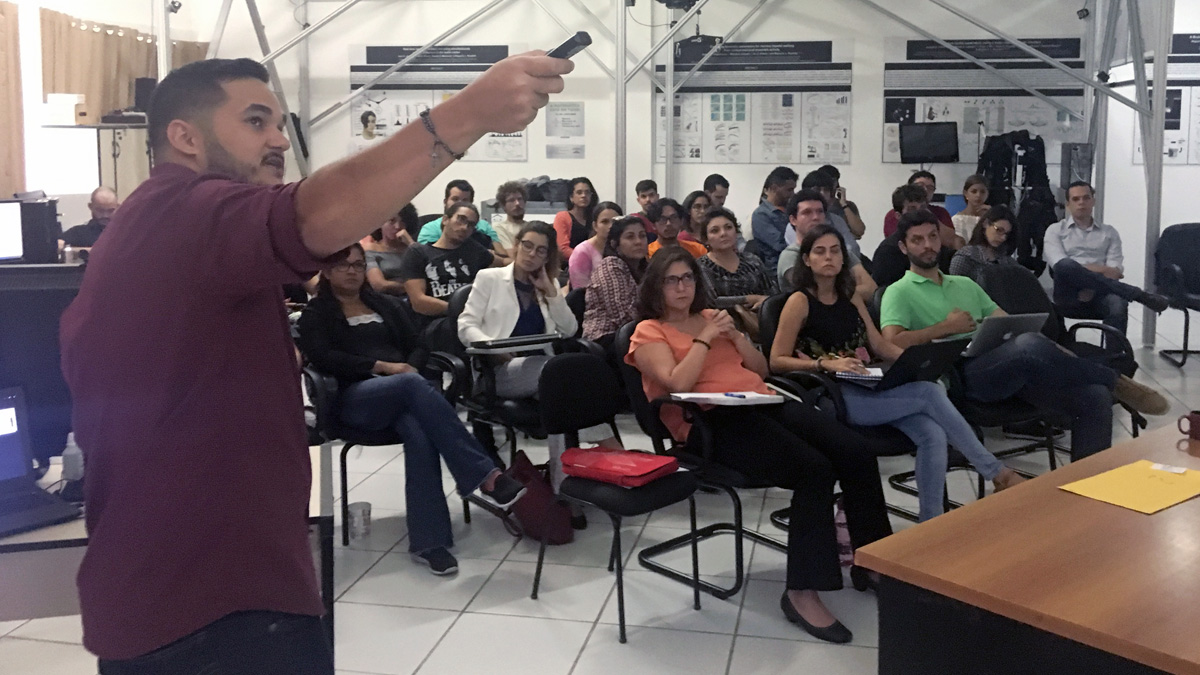The end of February was marked by the master's defenses of the Postgraduate Program in Neuroengineering, of Edmond and Lily Safra International Institute of Neuroscience (IIN-ELS). Between the 23rd and 28th of February 2018, eight students defended their dissertations on topics related to the electrophysiological recording of neurons, nervous system stimulation and decision-making, among other topics.
The first defense took place on February 23, in Macaíba (RN). The student Lorraine Andreoli developed a behavioral and electrophysiological characterization of an experimental model with schizophrenia due to social isolation. She researched the neural behavior of the model to try to identify abnormalities in neural pathways associated with the disorder.
On Monday, February 26, there were two more defenses. One was the student Eduardo Bacelar Jacobi. His work also involved characterization, this time of neural oscillations in response to auditory stimuli. This study expands the volume of knowledge about the neuronal activities associated with verbal communication, a relevant activity in groups of primates.
The second defense of the day was that of the student Mab Suellen Abreu Nunes. She presented her research on immune responses to implantation of electrodes in the spinal cord. Electrical stimulation systems in the medulla have originated new treatments against diseases, such as Parkinson's and chronic pain. These therapies are less invasive, less expensive, and recover faster than traditional alternatives. However, there is still little knowledge about the inflammatory responses caused by the implantation of these electrodes and the study by Nunes sought to provide new information.
Thiago Chagas de Amorim defended, on February 27, a study that is part of a larger project on understanding the processing of tactile stimuli related to decision-making, in an experimental model. His aim was to understand the role of thalamic nucleus regions in the performance of some cognitive tasks.
After Amorim's defense, the student Edson Ricardo Junior defended his research that investigated a new methodology to locate brain regions responsible for the information processing relating to objects from three different semantic categories (CS): people, tools and animals. Using electroencephalography, a precise and low-cost technique, Ricardo Júnior identified similarities found in the right temporal-frontal, left temporo-parietal and occipital regions, in the theta and alpha bands, for the amodal processing of the different CS.
The last day of February was marked by three dissertation defenses for the Master in Neuroengineering
On February 28, the last three defenses of the month took place. The first one was that of the student Pedro de France Cavalcanti, who used a technique of microscopy call stereology to try to describe the substantia nigra of an experimental model. This brain region is involved in various motor and cognitive behaviors. Cognitive dysfunctions in the substantia nigra and other neuronal pathways are involved in diseases such as depression and schizophrenia.
Juliana Ávila de Souza studied the electrophysiological processing of sound stimuli. In a project with several work fronts, Souza developed a new method for studying communication, vocalization and social interaction in an experimental model. His work included the study of six brain regions involved in vocalization.
The last student of the week to defend her master's thesis was Andrea Coutinho Sarmento. She researched the evaluation of transcranial direct current stimulation as a therapy for children with ASD. The main advantage of this electrical stimulation technique is that it is non-invasive, does not cause pain or discomfort and can be used in conjunction with other therapies.
With these eight defenses, the Postgraduate Program in Neuroengineering at the IIN-ELS currently has 24 graduates. This is the first master's course in Neuroengineering in Brazil recognized by the Higher Education Personnel Improvement Coordination (CAPES).















